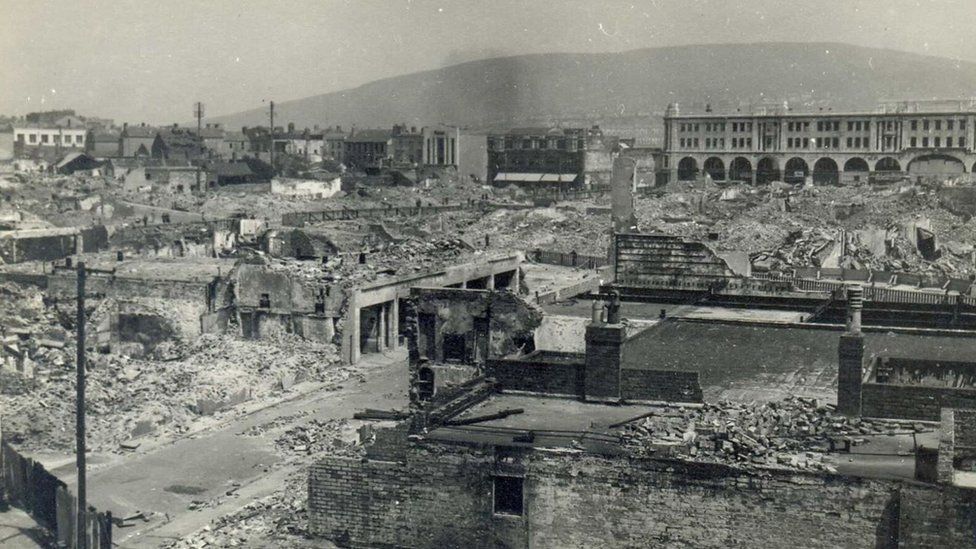When you think of Swansea, you might picture serene coastal views, the poetic footprints of Dylan Thomas, or the bustling, modern city it has become. But cast your mind back to the dark days of World War II, and you’ll uncover a story as poignant as it is powerful—a narrative etched into the very bricks and hearts of Swansea and its surrounding villages.
The Blitz on Swansea: A City Under Siege
Swansea’s defining moment during WWII came in February 1941, when the Luftwaffe unleashed a relentless three-night bombing campaign known as the “Three Nights’ Blitz.” Imagine, if you will, the serene cityscape torn asunder by explosions, fires raging across the skyline, and the ever-present wail of air raid sirens. Swansea was targeted for its docks and industrial areas, pivotal to the British war effort, but the bombs did not discriminate, levelling homes, shops, and lives indiscriminately.
“The sky was lit up as if it was daytime, and the ground shook with each explosion. We huddled in our Anderson shelter, praying for it to end. The next morning, Swansea was unrecognisable.”
Local resident Gwen Thomas, then a young girl
The Aftermath: Rubble and Resilience
Emerging from their shelters, the people of Swansea found their beloved city in ruins. Over 230 lives were lost, thousands were injured, and swathes of the city centre were obliterated. Iconic structures like the Ben Evans Department Store were reduced to rubble. Yet, in the face of such devastation, the spirit of Swansea did not waver.
In the nearby village of Mumbles, which also suffered bomb damage, the community banded together. “We had nothing left but each other,” said Rhodri Davies, a Mumbles resident. “The village hall became our hub, a place where we shared what little we had and helped rebuild our shattered lives.”
Stories of Humanity
In the village of Gorseinon, the community faced similar trials. When the village school was bombed, teachers and parents rallied to convert local homes into makeshift classrooms, ensuring that the children’s education continued despite the destruction. “It was our way of saying that Hitler wouldn’t break us,” recalled former student Megan Hughes.
Rebuilding and Moving Forward
The war’s end did not bring an immediate return to normalcy. The rebuilding of Swansea was a slow, painstaking process. Yet, it was also a time of innovation and renewal. The city centre was redesigned, modernised, and rebuilt, paving the way for the Swansea we know today.
In Penclawdd, a small village famed for its cockle industry, the war had left scars but also inspired resilience. The local women, who had kept the cockle industry alive throughout the war, became emblematic of the village’s determination to thrive against all odds.
Swansea’s post-war reconstruction was not merely about brick and mortar; it was about healing and community. Festivals, memorials, and new social initiatives emerged, all aimed at fostering a renewed sense of unity and purpose.
A Legacy of Strength
The impact of World War II on Swansea is a testament to the city’s fortitude. It is a story of ordinary people facing extraordinary circumstances with courage and compassion. The scars of war, both visible and invisible, have been woven into the fabric of Swansea’s history, reminding us of the resilience of its people.
Swansea’s wartime spirit is like a robust engine—pushed to its limits, battered, but never broken. And in the words of Jimmy Carr, though perhaps a bit cleaner, it’s a reminder that even in the darkest of times, a bit of Welsh humour and a lot of grit can light the way forward.
So, next time you walk through Swansea’s streets or visit its surrounding villages, remember the stories of those who faced the blitz with unyielding bravery and a resolve to rebuild. Their legacy is the thriving, vibrant Swansea we cherish today.



Leave a Reply